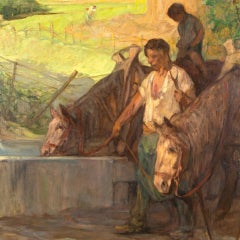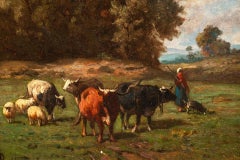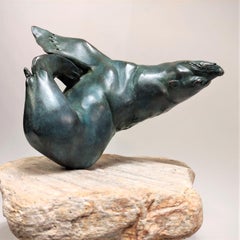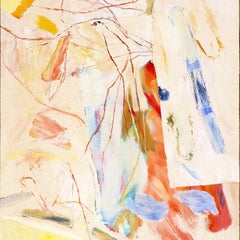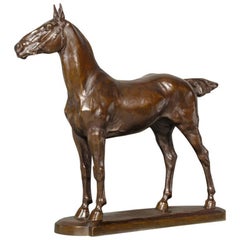Chastelain & Butes
to
9
55
31
10
8
8
6
3
3
3
3
1
1
1
1
1
1
2
2
1
1
1
Horses resting at the watering place Oil on canvas by Jules Pierre Van Biesbroec
Located in Gent, VOV
Horses resting at the watering place Oil on canvas by Jules Pierre Van Biesbroeck
Jules Van Biesbroeck was born in Italy in 1873 during h...
Category
20th Century Figurative Prints
Materials
Canvas, Oil
Shepherdess at the edge of the forest oil on canvas by Louis Robbe
Located in Gent, VOV
"Robbe Louis, outdoor animal painter
ROBBE Louis Born in Courtrai on November 17, 1806, died in Brussels on May 2, 1887. Student of Eugène Verboeckchoven and Jean-Baptiste De Jonghe....
Category
19th Century Landscape Paintings
Materials
Canvas, Oil
Sea Lion by Greta van Puyenbroeck (1943- )
Located in Gent, VOV
sea lion
Artist: Greta van Puyenbroeck
Dimensions: 22 h x 44 l x 30 cm w without base with base 29 x 33 x 38 cm
Foundry: Artcasting
Sign
Greta Van Puyenbroeck was born in Antwerp in ...
Category
20th Century Figurative Sculptures
Materials
Bronze
Abstract Impressionistic painting on board Ineffable by Pierre Vlerick
Located in Gent, VOV
This painting is a perfect example of lyrical abstraction and a choice painting out of the best period of Vlerick's career.
Ineffable, 1962
Oil on Masonite board
91,5 x 61,5 cm (without frame) 93 x 63 cm (framed)
Signed and dated Top Right ‘P. Vlerick 1962’
with title, signature place and date at the back:
Ineffable P. Vlerick Afsnee 1962
Pierre Vlerick’s work shows some resemblance to Willem de Kooning’s. While the Dutch American was famed for the wild manner in which he treated his canvas, Pierre Vlerick showed some more restraint, but making a painting was in any case a slow process of stopping and starting and revising. His exploration is meant to result in a correct proportion of colour fields and streaks, often applied layer upon layer. All his colors have a luminous intensity. It was mainly Bonnard’s colorful work that inspired Vlerick to compose his own singular range of colors of slightly tingling yellows, greens, oranges and bits of blue here and there. Abstraction is emphasized by his use of color. Colors not associated with objects from daily life often dominate the composition: purple, for instance. This is the basis for his continuing abstraction, ending up as color fields combined with organic elements depicted with the vaguest of contours.
Though both artists create a very metropolitan, say even worldly art, their work evokes nature. De Kooning has been called a master of ‘abstract landscape’. The structure of Vlerick’s works, too, is very vegetable and organic. No wonder he referred to his paintings as his ‘gardens’. Neither artist allowed his garden to remain empty: de Kooning created a female figure looking like a cross between a floozy and the mother goddess. Vlerick imagined a woman who is enjoying her body. Vlerick’s approach to abstract art is the same as de Kooning’s; they refuse to paint in a figurative manner, yet at the same time do not wish to renounce referring to reality.
De Kooning once put it very accurately during an interview when he conceded that painting the human figure any longer was absurd(in the post-war period), but also stated that it would be even more absurd not to do it. The only way out of this ambiguous dilemma is the deconstruction of the human figure. Not in order to reject it, but to show it in all its fragility.
Pierre Vlerick’s exceptional artistic talents were already recognized while he was studying at the Ghent Academy (1940-1944) whereupon graduating he received a gold medal.
In 1947-1948 Vlerick enrolls at the “la Grande Chaumière Academy”, a Parisian private academy which attracts lots of foreign artists thanks to the reputation of its most important teachers such as Maurice Denis (1870-1943). Denis was one of the founding fathers of “the Nabis” and is also considered to be the godfather of abstract art by many artists and art critics. Maurice Denis is famous for his quote: "Remember that a painting, before it is any kind of representation, is essentially a flat surface covered with colors in a certain collected order."
At La Grande Chaumière, Vlerick is challenged to develop a pictorial language of his own. Vlerick develops a way to translate the observed reality into visions of color and form, which can be situated somewhere on the axis between the figurative and the abstract. Reality is decomposed and reconstructed into a complete new representation.
After a trip to Spain in 1955 the painter evolves towards the use of brighter colors. At the Brussels World Exhibition of 1958 (Expo 58) Vlerick is for the first time confronted with real works of 17 American artists (William Baziotes, James Brooks, Sam Francis, Arshile Gorky, Adolph Gottlieb, Philip Guston, Grace Hartigan, Franz Kline, Willem de Kooning, Robert Motherwell, Barnett Newman, Jackson Pollock, Mark Rothko, Theodoros Stamos, Clyfford Still, Bradley Walker...
Category
20th Century Abstract Paintings
Materials
Masonite, Oil
Mare - hunting horse by Josuë Dupon 1864-1935
Located in Gent, VOV
A beautiful large bronze sculpture of a proud standing mare. Old sand cast created during the artist Josuë Dupon's lifetime.
Josuë Dupon (also Josué or Josue Dupon) was a Flemish sculptor and engraver. His work also includes painting and graphics.
He received his training through evening classes at the academy of Roeselare and Antwerp (1884) and later at the National Institute of Fine Arts (1887). In 1891, he won a gold medal with the monumental sculpture group Samson kills the lion and was runner-up in the Prix de Rome for sculpture. From that year on, his work appeared regularly in exhibitions at home and abroad. His reputation was such, that he became one of a select group of sculptors allowed by King Leopold II to carve statues in Ivory, which was imported from the Congo, the Belgian colony. In 1893 his exceptionally refined ivory statue of Diana was bought by the Antwerp Royal Museum of Fine Arts, which also acquired his spectacular bronze Vulture defending its prey a year later.
Working in every genre and mastering every technique and material, Josuë Dupon became best known as a sculptor of exotic animals. He was equally capable of faithfully expressing anatomical detail as of rendering the animals' nature. Josuë Dupon was a technically faultless realist, with a sense of the dramatic, a feeling for decorative complexity and a tendency towards idealizing. The placement of his camel driver and two bronze groups at the entrance to Antwerp Zoo confirmed this reputation as animalier.
The career that Dupon subsequently built, brought him numerous important awards and an appointment as professor at the Antwerp Academy, a tenure he held between 1905 and 1934. Besides animals, he sculpted busts, war memorials and public monuments. For one of the largest sculptural monuments and the largest fountain in the city of Buenos Aires, called Monument of the Two Congresses, he collaborated with his good friend, the Belgian sculptor Jules Lagae. Josuë Dupon created several statues of mighty condors for this monument.
At the start of his career his conception of art was strongly influenced by traditional 19th century artistic ideals. After the turn of the century his compositions and surface treatment changed and became more modern. He met Rembrandt Bugatti around 1905 or 1906 in the 'Jardin des Plantes' in Paris and invited him to Antwerp. Bugatti began travelling to Antwerp in 1906 to observe and sculpt the inhabitants of its zoo, which was then considered the best in the world, and Dupon allowed Bugatti to stay with him during several of his early visits. As such Dupon became a friend and a bit of a father figure to Rembrandt Bugatti.
Dupon did not play a very active part in artistic movements or associations. Dupon remains an important sculptor not only through his body of work but also because of the influence he exercised through interactions and collaboration with other sculptors such as Lagae, Bugatti and Bourdelle but also because he trained leading sculptors such as Albéric Collin (1886-1962), Willy Kreitz...
Category
19th Century Figurative Sculptures
Materials
Bronze
A pair of ducks by Carl August Brasch.
Located in Gent, VOV
A very finely detailed and stylized bronze sculpture of a pair of ducks on a marble plinth. Signed C. Brasch. In terms of approach and style, this work is modern and somewhat reminis...
Category
20th Century Figurative Sculptures
Materials
Marble, Bronze
Landscape at Nafraiture by Léon Frederic (1856 - 1940)
By Léon Frédéric
Located in Gent, VOV
Léon Frédéric was one of the greatest representatives of Belgian symbolism and realism. He was ennobled as a baron in 1929 by King Albert I.
Discove...
Category
20th Century Landscape Paintings
Materials
Oil
Edmond De Maertelaere (1876 - 1938) Old woman, Pont Aven
Located in Gent, VOV
Edmond De Maertelaere was born in Ghent on 8 October 1876.
At the age of 14, Edmond won a first prize in decorative drawing at the Nivelines school. He then enrolled at the "Royal Ac...
Category
19th Century Modern Portrait Prints
Materials
Oil
Twilight, oil on canvas by Narcisse-Virgile Diaz de la Pena (1807 - 1876)
By Narcisse Virgilio Díaz de la Peña
Located in Gent, VOV
Dusk
Dimensions: (h) 28 cm x 49 cm (w) (canvas)
Narcisse-Virgil Diaz de la Pena (1807 - 1876): Biography
Narcisse Diaz de la Peña was a French landscape ...
Category
19th Century Landscape Paintings
Materials
Oil
On the banks of the Meuse near Waulsort by François Roffiaen (1820-1898)
Located in Gent, VOV
On the banks of the Meuse, near Waulsort (before the canalization of the Meuse)
Signed lower right
François Roffiaen (1820-1898): A Life in Brushstrokes
His kin, born from humble s...
Category
19th Century Landscape Paintings
Materials
Oil
Alone in the world, Oil on panel by Duwez Henri-Joseph (1810-1884)
Located in Gent, VOV
Alone in the world
Signature on the left
Presented in a period frame
Provenance: Sold in Paris on February 6, 1895, at Drouot, for 140 Gold Francs (Bénézit)
Biography Henri-Joseph ...
Category
19th Century Academic Figurative Paintings
Materials
Acrylic
Carpeaux etnic bronze : Le chinois (1868). N1 (scetch) Observatory fountain
Located in Gent, VOV
JEAN-BAPTISTE CARPEAUX 1827 - 1875
Le Chinois N°1 (study for Asia) (1868). Model from the observatory fountain. Sketch
Height ca.60 cm
A similar copy auctioned on June 22, 2023, at ...
Category
1860s Realist Figurative Sculptures
Materials
Bronze
Impressionism painting No nightshade Oil on panel by Pierre Vlerick
Located in Gent, VOV
This painting is a perfect example of lyrical abstraction and a choice painting out of the best period of Vlerick's career.
Geen nachtschade (No Nightshade), 1962
Oil on Masonite board
121 x 61 cm (without frame) 136 x 75 cm (framed)
Signed and dated bottom left ‘P. Vlerick 1962’&
with title, signature place and date at the back
Pierre Vlerick...
Category
1960s Abstract Impressionist Abstract Paintings
Materials
Masonite, Oil
Impressionism painting 4 Oil on panel by Pierre Vlerick (1923 - 1999)
Located in Gent, VOV
This painting is a perfect example of lyrical abstraction and a choice painting out of the best period of Vlerick's career.
Pierre Vlerick’s work shows...
Category
1960s Abstract Impressionist Abstract Paintings
Materials
Masonite, Oil
Animal Bronze Ewe and Ram by Alberic Collin (close friend of Rembrandt Bugatti)
Located in Gent, VOV
A fine quality, twentieth-century bronze model of a ram and a ewe by Alberic Collin (Belgian 1886-1962). Cast by the Rocher Paris foundry signed, inscri...
Category
1930s Nude Sculptures
Materials
Bronze
Animal Bronze: Lying eagle by Alberic Collin (close friend of Rembrandt Bugatti)
Located in Gent, VOV
Numbered 1/8
Cast Fonderie Rocher
A fine cast with a vivid green patina of a bird of prey
Category
1930s Nude Sculptures
Materials
Bronze
Albéric CollinAnimal Bronze: Lying eagle by Alberic Collin (close friend of Rembrandt Bugatti), 1935
$17,193 Sale Price
25% Off
Italian Animal Bronze : Battling Rams by Sirio Tofanari
Located in Gent, VOV
A very rare bronze cast of two battling Rams, by Sirio Tofanari (1886-1969). An old cast with a dark brown shaded patina. On a heavy green marble steppe...
Category
1930s Art Deco Figurative Sculptures
Materials
Marble, Bronze
Boy with a flute
By Leon Herbo
Located in Gent, VOV
Léon HERBO (1850-1907), Young boy with a flute, oil on canvas, signed upper left and dated 1879. This painting seems inspired by the painting "Singing Boy with a Flute" by the Dutch ...
Category
Late 19th Century Dutch School Figurative Paintings
Materials
Canvas, Oil
Roaring Lionness
Located in Gent, VOV
A fine quality, twentieth-century bronze model of a roaring lioness by Alberic Collin (Belgian 1886-1962). Prior to casting by the Valsuani foundry it w...
Category
1930s Art Deco Figurative Sculptures
Materials
Bronze
$35,597 Sale Price
20% Off
Washerwomen by the river, oil on canvas by Karl Girardet
Located in Gent, VOV
This painting is part of a series of paintings Girardet made of washerwomen by the river. Upon their presentation they had a considerable success, which endures till now. In 2008 another painting of this series was sold at Christie's .
Karl Girardet was born in 1813 in Le Locle, which at the time was part of France but is now part of Switzerland. Girardet lived and worked most of his life in Paris. After beginning his career as a painter of landscapes, he became a well-known history painter. As a confidant of the French king Louis Philippe I...
Category
Late 19th Century Realist Figurative Paintings
Materials
Oil, Canvas, ABS
River scene at sunset with figures gathering reeds
By Hermann Corrodi
Located in Gent, VOV
LEGNAIOLI SUL TEVERE - RIVER SCENE WITH FIGURE GATHERING REEDS
Oil on canvas: 30 1/2 x 38 1/2 in., 36 x 44 1/2 in. (framed)
Framed; lower right signed and dated: H. Corrodi, 1892
Category
1890s Italian School Landscape Paintings
Materials
Oil
Portrait par Edmond Theodor VAN HOVE (1853-1913)
Located in Gent, VOV
Portrait of a man. Oil painting on canvas, signed and located "Roubaix, 1906".
In this portrait, all attention is focused on the face, which is intrusively and self-consciously looking ahead. Except for the white collar and pocket handkerchief...
Category
Early 1900s Realist Portrait Paintings
Materials
Canvas, Oil
$3,654 Sale Price
20% Off
The Chapel Of Protection In Cagnes
By Paul Leduc
Located in Gent, VOV
La Chapelle de la Protection in Cagnes, circa 1925 Oil on panel, signed with the monogram lower left 27 x 34.5 cm Bibliography: The Painters of Cagnes, exhibition catalogue, Château-Musée Grimaldi, 2011, p.62
Paul Leduc...
Category
1920s Impressionist Landscape Paintings
Materials
Oil, Panel
$4,556 Sale Price
20% Off
Still life with a Chinese bowl by Jean Grimal
By Jean Grimal
Located in Gent, VOV
Jean Grimal is a true 20th century discovery. This breathtaking piece is a gorgeous example of his mastery as an artist. He beautifully creates chiaroscuro in this painting. The way the light touches the edges of the Chinese bowl and the grapes is an example of his skill in representing light.
Jean Grimal (1942-1998) was born in the town of Tulle, France in 1942. Jean’s family moved to Paris when he was 8 years of age. After receiving a classical French education with studies in Latin and Greek, Jean Grimal entered the University to receive his Baccalaureate. He then attended Claude Barnard School for three years, when he received his Art Degree. Upon completion Grimal taught art for seven years. As Grimal’s own interest in formal painting and art began to possess him, the artist’s destiny changed.
In 1967 Jean Grimal stepped aside from teaching and pursued a career in professional painting and working as an illustrator in advertising. As an advertising illustrator, Grimal worked with Lise Goldfard for more than 25 years at Studio 44 where they collaborated with major and important accounts, such as: Air France, Christofle, Peugeot, Lacoste, to name a few. At the same time he began presenting his formal paintings to galleries in Paris and Cannes, France and in London and Windsor, England. Much to his surprise, Grimal found that his paintings were sought after by major art galleries and collectors throughout Europe. After a number of years of being an important and successful art illustrator for these major accounts, he found himself having to choose between the two. Fortunately for collectors, he chose to dedicate his life to the classical style of painting. Jean looked at the simplest things in life through a microscope, where he could take the simplest object and depict the age of the fruit or the leaf.
Jean Grimal received great pleasure from his work and painted for over thirty years. As his style matured and became ever more perfect Jean Grimal truly reached the pinnacle of his career. The artist’s methods were particularly distinguished when measured against his peers. Grimal’s painting skill was distinctive and exceptional.
Jean Grimal was known for his realistic trompe l’oeil and still life paintings. The artist would carefully arrange the objects to form a satisfying composition. By painting every shadow, highlight, and reflection within each composition Grimal brought mundane subjects to life. His tight rendering combined with his attention to light and detail allowed him to blur the lines between illusion and reality, truly making his works one of a kind. Grimal’s trompe l’oeil paintings consist of intricate compositions of cards, envelopes, photographs, paper of different materials and weights, backs of canvases, images of other artists’ works, kitchen utensils, pistols, and more. Grimal had a talent for mastering these illusions that deceive the eye in his trompe l’oeil paintings.
No matter what genre Grimal was painting, tight, unperceivable brushwork characterizes his work. The artist painted every crease and crinkle, every shadow and highlight, every detail. By doing so, he was able to capture each individual surface texture of the objects in his paintings. Grimal was also fabulous at depicting light in his paintings- often contrasting strong lights with strong darks, creating chiaroscuro modeling.
His still life paintings are reminiscent of Dutch seventeenth century...
Category
Late 20th Century Realist Still-life Paintings
Materials
Canvas, Oil
$6,642 Sale Price
24% Off
Maternity: Pastel on paper. The Farewell By Ulysse Butin (1838-1883)
Located in Gent, VOV
"The Farewell By Ulysse Butin (1838-1883)"
Ulysse Butin, born in Saint-Quentin, into a poor family, had to earn his living early. An apprentice designer in a muslin factory, he took ...
Category
Mid-19th Century French School Figurative Drawings and Watercolors
Materials
Paper, Pastel
$2,947 Sale Price
20% Off
Oil on canvas : Cattle near the cliffs of Herne Bay KENT by Thomas Syndey Cooper
By Thomas Sidney Cooper
Located in Gent, VOV
Thomas Sidney Cooper was one of the foremost animal painters of the Victorian period. He was born in Canterbury, Kent, and as a small child he began to show strong artistic inclinations, but the circumstances of his family did not allow him to receive any systematic training. By the time he was twelve years old, he was working in the shop of a coach painter. Later he obtained a job as a scene painter, and he alternated between these two occupations for about eight years. He still felt a strong desire to become an artist, and all his spare moments were spent drawing and painting from nature. At the age of twenty, he went to London, drew for a while in the British Museum, and was admitted as a student of the Royal Academy. Subsequently, he returned to Canterbury, where he was able to earn a living as a drawing master and by the sale of sketches and drawings.
In 1827, he settled in Brussels and married before taking up a position as a teacher in Brussels in 1829. There he befriended Eugène Joseph Verboeckhoven, the great Belgian animal painter, who greatly influenced his style. He was also influenced by the 17th Century Dutch School. Because of the Belgian Revolution, he returned to London where he settled and first exhibited at Suffolk Street in 1833. He exhibited forty-eight pictures at the British Institution between 1833 and 1863. ‘Landscape and Cattle’, Royal Academy 1833, was shown until 1902 without a break - a record for a continuous exhibit at the Royal Academy. Sheep and cattle were his most frequent subjects, although he did paint a few figurative subjects. Cooper collaborated between 1847 and 1870 with Frederick Richard Lee...
Category
1880s Realist Landscape Paintings
Materials
Canvas, Oil
Thomas Sidney CooperOil on canvas : Cattle near the cliffs of Herne Bay KENT by Thomas Syndey Cooper
$22,824 Sale Price
20% Off
Still-Life with a Viola da Gambe
By Jean Grimal
Located in Gent, VOV
Artist: Jean Grimal (1942-1998)
Period: 20th century
Condition: Excellent condition
Material: Oil painting
Length: 69 cm
Height: 58 cm
Signed Under Right
Category
Late 20th Century Realist Still-life Paintings
Materials
Oil
$7,546 Sale Price
20% Off
